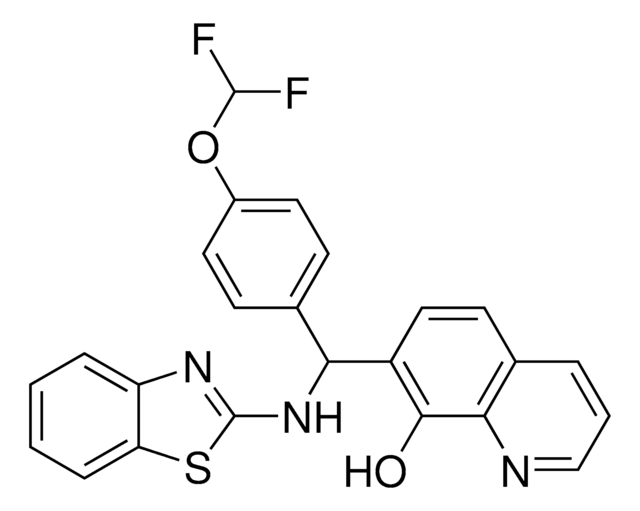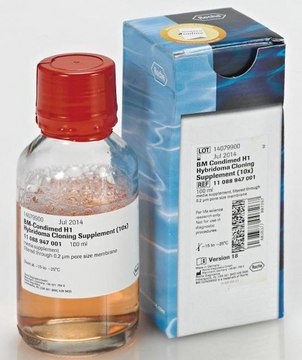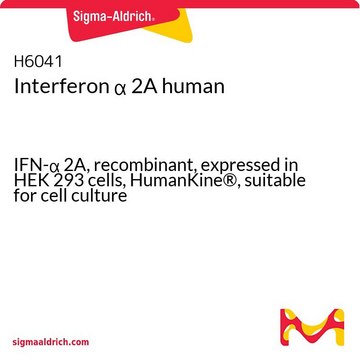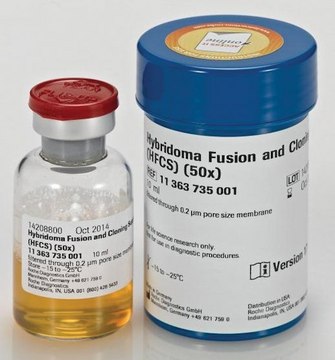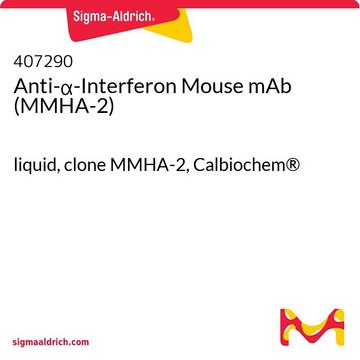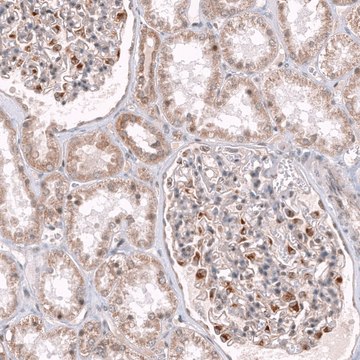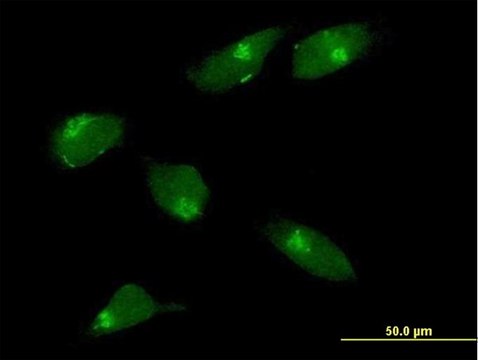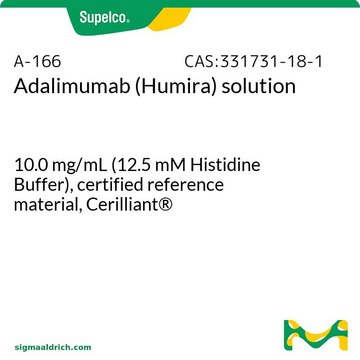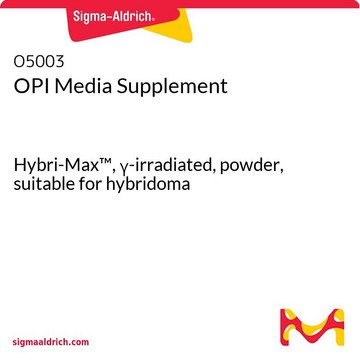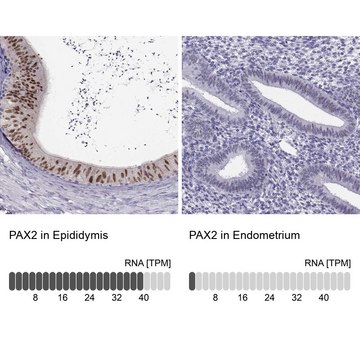推荐产品
质量水平
方案
≥98% (HPLC)
表单
powder
颜色
white to beige
溶解性
DMSO: 30 mg/mL, clear
储存温度
2-8°C
SMILES字符串
OC(C(N=CC=C1)=C1C=C2)=C2C(C3=CC=C(OC(F)F)C=C3)NC4=NC5=C(S4)C=CC(OC)=C5
InChI key
YSGBFDHVEQJPPX-UHFFFAOYSA-N
生化/生理作用
KIN1408 is a small molecule that targets factors at or above the level of MAVS in the RLR signaling pathway to drive IRF3 activation (IRF3 nuclear translocation ECmax = 5 μM in 20 h; Huh7 cells) without significant cytotoxicity (50 μM/20 h in Huh7 or 20 μM/36 h in HEK293 cultures). KIN1408 induces cellular transcription of innate immune genes (Eff. conc. 1.25-20 μM in 20 h; PMA-differentiated THP-1 cells) in a MAVS- and IRF3-dependent manner and exhibits broad-spectrum anti-viral activity (Eff. conc. 1-5 μM), including dengue virus 2 (DV2; Huh7), influenza A (IAV H3N2; HEK293), RSV (A2 strain; HeLa), Ebola (EBOV strain Zaire; HUVECs), Nipah virus (NiV; HUVECs), and Lassa virus (LASV; HUVECs). MAVS signaling activation upon Zika virus infection or KIN1408 treatment is reported to result in pTBK1 mitochondria relocalization and caspase 3-mediated apoptosis in human neuroepithelial stem (NES) cells.
KIN1408 is a small molecule that targets factors at or above the level of MAVS in the RLR signaling pathway.
危险声明
预防措施声明
危险分类
Aquatic Chronic 4
储存分类代码
11 - Combustible Solids
WGK
WGK 3
闪点(°F)
Not applicable
闪点(°C)
Not applicable
法规信息
新产品
Marco Onorati et al.
Cell reports, 16(10), 2576-2592 (2016-08-29)
The mechanisms underlying Zika virus (ZIKV)-related microcephaly and other neurodevelopment defects remain poorly understood. Here, we describe the derivation and characterization, including single-cell RNA-seq, of neocortical and spinal cord neuroepithelial stem (NES) cells to model early human neurodevelopment and ZIKV-related
Sowmya Pattabhi et al.
Journal of virology, 90(5), 2372-2387 (2015-12-18)
The cellular response to virus infection is initiated when pathogen recognition receptors (PRR) engage viral pathogen-associated molecular patterns (PAMPs). This process results in induction of downstream signaling pathways that activate the transcription factor interferon regulatory factor 3 (IRF3). IRF3 plays
R R Green et al.
Genomics data, 7, 290-292 (2016-03-17)
The recognition of pathogen associated molecular patterns (PAMPs) by pattern recognition receptors (PRR) during viral infection initiates the induction of antiviral signaling pathways, including activation of the Interferon Regulator Factor 3 (IRF3). We identified small molecule compounds that activate IRF3
我们的科学家团队拥有各种研究领域经验,包括生命科学、材料科学、化学合成、色谱、分析及许多其他领域.
联系技术服务部门